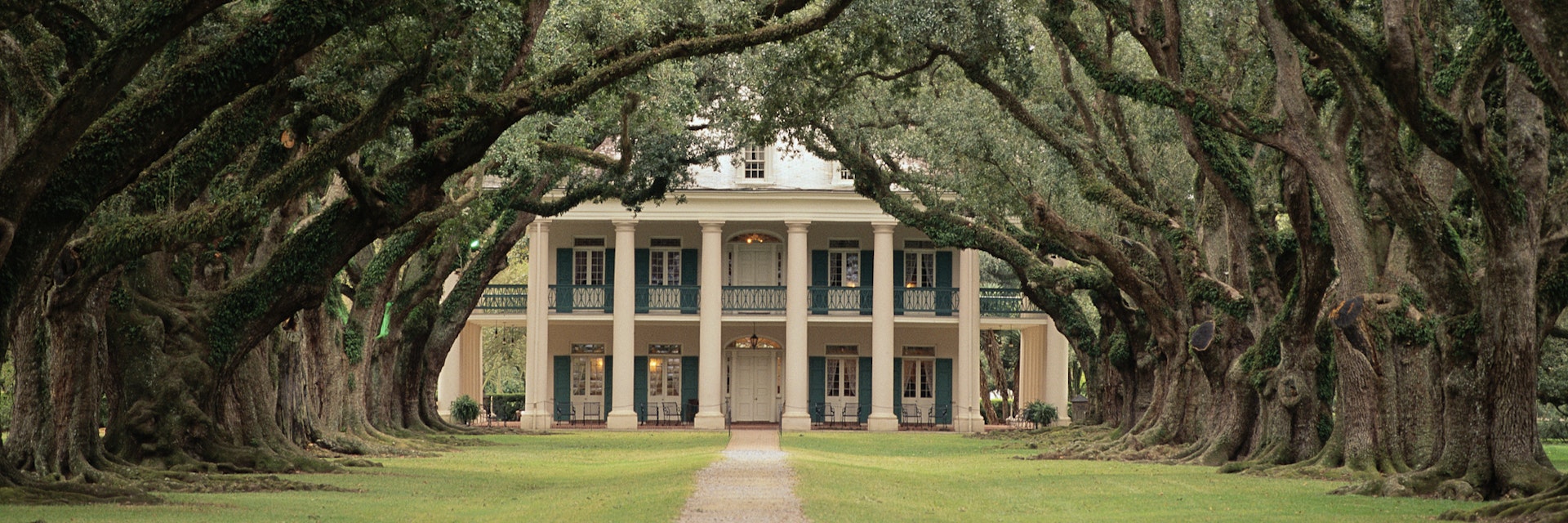Oak Alley is graced with immaculate live oak trees and a gorgeously preserved plantation house which stand alongside dirt-floor shacks that housed generations of enslaved labor. Enormous plantations remain a major tourism draw in the Southern USA, but there has been a reckoning with how these destinations should be managed and marketed. Where previous tours focused on the wealth of the plantation owners, visitors now demand the story of the enslaved be told alongside the mansions they built and the fields they bled in. Oak Alley attempts to tell all of these stories. The effort is sincere, although it’s hard not to feel a little shaken by the sheer dichotomy of the two experiences.
History of Oak Alley
Oak Alley began as the Bon Séjour (“pleasant stay”) plantation, which was built on land bought by the French Creole Valcour Aime in 1830. Aime’s purchase, made almost three decades after the Louisiana Purchase (1803), was a testament to the continued economic power of the French Creole elite in Louisiana, despite the increasing presence of planters from other American states, who had reshaped much of Louisianan society.
The property was eventually exchanged by Aime to his brother-in-law, Jacques Télesphore Roman, who used enslaved labor to build the present mansion, completed in 1839. Slavery was baked into every element of life on the plantation, from the wealth exhibited in the house to the pecan trees that were first successfully grafted here by an enslaved gardener, Antoine. Oak Alley’s cash crop was sugarcane, whose production required long hours of backbreaking work conducted in sweltering heat and humidity.
The economic viability of sugarcane was inextricably tied to an unpaid workforce. The emancipation of slaves following the Civil War led to the plantation being sold and resold to a long list of owners. In 1925, it passed into the hands of Andrew and Josephine Stewart. Josephine, the daughter of a Texas cattle rancher, ran Oak Alley as a cattle ranch and had the mansion renovated. When she died in 1972, the grounds and house passed to the Oak Alley Foundation. The property itself was added to the National Register of Historic Places in 1974.
The grounds
The plantation’s namesake is by far its most distinguishing physical characteristic: a double row allée (path) of gnarled Southern live oak trees that leads to the front door of the main house. Oak Alley’s oak alley served both aesthetic and utilitarian purposes; besides being beautiful, the canopied trail diverted wind into the main living space.
Besides the 28 live oaks decorating the front yard, Oak Alley’s grounds speak to the plantation’s changing fortunes and economic lifeblood. Where a pecan grove once stood, you’ll find the remains of pasture land grazed on by cattle transplanted here by the Stewart family. Formal, manicured gardens speak to extensive landscaping, but also conceal the location of a former kitchen garden.
Thanks to the climate, the grounds here are peppered with a typical south Louisiana explosion of fecund flora: ancient trees like crepe myrtle, magnolias, and camellias are intertwined with hanging ‘chandeliers’ of Spanish moss.
The enslaved and the main house
On the grounds, visitors will find six reconstructed slave cabins. Within these dwellings are the physical artifacts and implements of slave labor, as well as interpretive text on enslaved culture, as well as the backbreaking physicality of growing, harvesting, and refining sugarcane. Visitors will also find information on individual slaves, an attempt at telling the story of the disenfranchised and giving a human face to the victims of an inhuman practice. To this end, the Oak Alley website maintains an exhaustive database on the slaves who worked here.
After soaking in the sheer Gothic aesthetics of the grounds and the harrowing story of the enslaved, most visitors take a tour of the main plantation house. The mansion is an enormous square structure cut by a giant center hall, built in the Greek Revival style, with high ceilings and large windows that let in plenty of light; these could also be opened to provide ventilation in the days before air-conditioning. Be on the lookout for 28 Doric columns, meant to compliment the 28 live oaks.
The quarters of the enslaved people are visited on self-guided tours, while docents lead guests around the main house. After absorbing content on the brutality of chattel slavery, it feels jarring to hear about the furniture and bedspreads of the masters who enforced that system, but Oak Alley makes a point of relaying all of these details, and letting visitors make their own judgements on history.
Tickets, onsite eating, and getting there
- An adjoining restaurant is open daily for breakfast (8:30-10:30am) and lunch (11am-3pm). Expect a menu of gumbo, po-boys, salads and similar grub (mains $11-16).
- The Spirits Bar, also adjoining Oak Alley, serves cocktails, and can be found in the West Pavilion building, open daily 11a-5pm.
- Oak Alley is open 9am-5pm daily; tickets for adult/student/child run $25/10/7.
- The plantation is about 50 miles west of New Orleans, in Vacherie. The physical address is 3645 LA-18. LA-18 is colloquially known as ‘River Road,’ and if you drive along its length you’ll be adjacent to the green Mississippi River levee.
- You can book a tour here in New Orleans from almost any hotel concierge or French Quarter tourism kiosk, but you’ll get charged around $40 for transportation to and from Vacherie; if you have your own wheels, it’s a lot more economical to drive.




